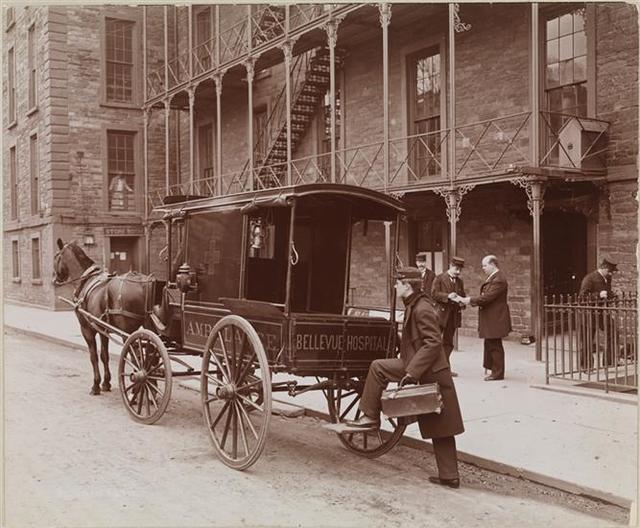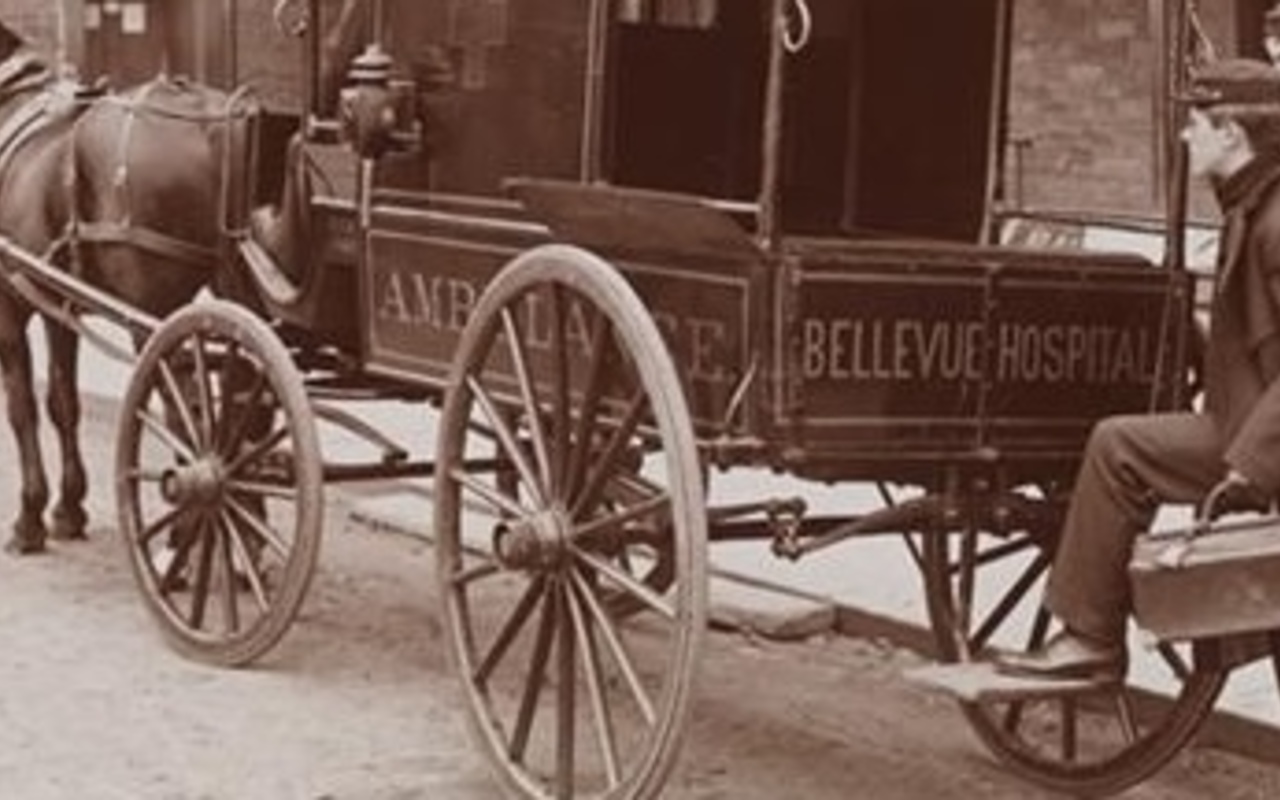Responding to Crisis
The Origins of the Ambulance System in 19th-Century New York
Join me on a buggy trip back in time to discover the origins of the ambulance system and uncover the historical and social forces that shaped emergency medicine in 19th-century New York.

Byron Company (New York, N.Y.), 93.1.1.18388 Museum of the City of New York.
https://collections.mcny.org/CS.aspx?VP3=DamView&VBID=24UP1GQ64Q0ZP&PN=1&WS=SearchResults#/ DamView&VBID=24UP1GQ64Q6F8&PN=1&WS=SearchResults.

The Podcast
The Podcast.
Suggested Readings
For histories of public health and medicine in the United States:
Colgrove, James Keith, Gerald E. Markowitz, and David Rosner. The Contested Boundaries of American Public Health. New Brunswick, New Jersey: Rutgers University Press, 2008.
Morantz-Sanchez, Regina Markell. Sympathy and Science: Women Physicians in American Medicine. New York: Oxford University Press, 1985.
Post, Carl J. Omaha Orange: A Popular History of EMS in America. Boston: Jones and Bartlett Publishers, 2002.
Reverby, Susan, and David Rosner. Health Care in America: Essays in Social History. Temple University Press, 1979.
Rutkow, Ira M. Seeking the Cure: A History of Medicine in America. New York, New York: Scribner, 2010.
For social histories of the urban environmental landscape of 19th-century New York City:
Ballon, Hilary, and Catherine McNeur. Taming Manhattan: Environmental Battles in the Antebellum City. Cambridge, Massachusetts: Harvard University Press, 2014.
Steinberg, Theodore, and Hilary Ballon. Gotham Unbound: The Ecological History of Greater New York. New York, New York: Simon & Schuster, 2014.
For memoirs of 19th-century ambulance surgeons:
Barringer, Emily Dunning, and Leo Hershkowitz. Bowery to Bellevue: The Story of New York’s First Woman Ambulance Surgeon. New York: W.W. Norton, 1950.
For the Civil War origins of the ambulance in the United States:
Freemon, Frank R. Gangrene and Glory: Medical Care during the American Civil War. Madison, New Jersey: Fairleigh Dickinson University Press, 1998.
Rutkow, Ira M. Bleeding Blue and Gray: Civil War Surgery and the Evolution of American Medicine. New York: Random House, 2005.
Bibliography
- This text has 0 annotations
- This text has 0 highlights
- This text has 0 annotations
- This text has 0 highlights
Credits
This podcast was produced by Alyssa Moore, with the assistance of the New York University Archives & Public History Program.
All sound effects are credited to Epidemic Sound, a subscription-based, royalty-free music and sound library, with the exception of "The Irish, the Irish" audio recording, the ambulance siren sound effect, and "That Rag' Ragtime Two-Step" audio recording.
"The Irish, the Irish" (1904) audio recording by Henry Frantzen, Billy Murray, and Joseph Farrell is credited to the Library of Congress, National Jukebox Digital Collection. It is believed to be in the public domain under the Music Modernization Act.
The ambulance siren sound effect is credited to Alyssa Moore.
"That Rag' Ragtime Two-Step" (1908) audio recording by Arthur Pryor's Band is credited to the Library of Congress, National Jukebox Digital Collection. It is believed to be in the public domain under the Music Modernization Act.
Acknowledgements
Thank you for the assistance of Dr. Ellen Noonan, Director of the Archives and Public History Program.
Thank you to Jojo Karlin, Digital Scholarship Specialist at NYU Libraries Digital Scholarship Services.
Thank you to NYU LaGuardia Student Technology Center and Computer Lab.
Thank you to guest experts Kelly Shingledecker-Larson, Venessa Soldo-Jones, and Jeff Roberg.
Thank you to voiceover artist John Moore.
Thank you to consultant Kathy Kroshus.
Thank you to Shannon Moore.
Take Down Notice
The creator claims Fair Use of materials used in this project under Section 107 of the Copyright Act. Parties who have questions or who wish to contest the use of specific works may contact the creator.
Metadata
- publisherAlyssa Moore
- publisher placeNew York, New York
- rights
- rights holderAlyssa Moore

